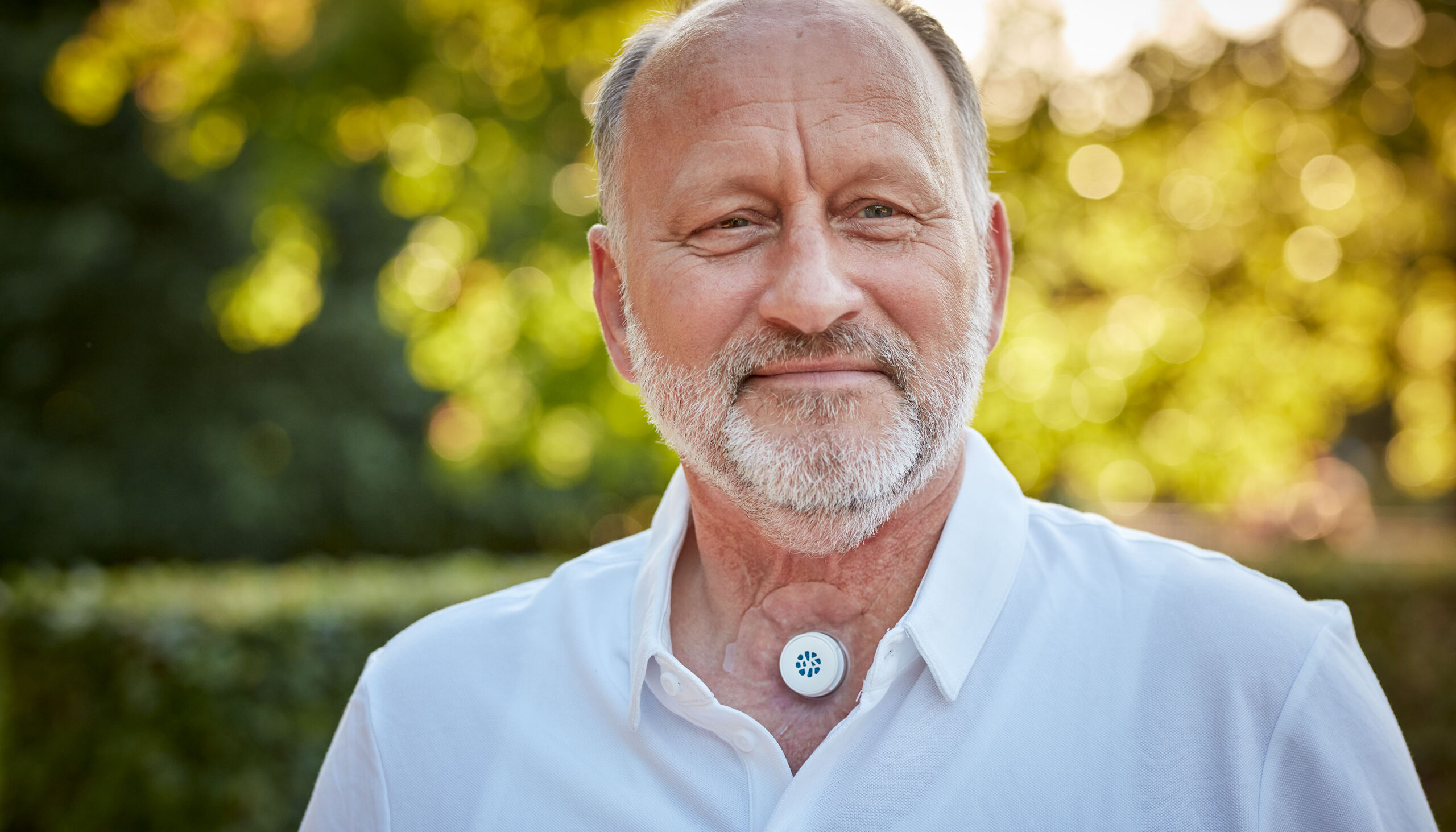What is a total laryngectomy?
Undergoing a total laryngectomy can be an overwhelming experience, but you shouldn’t feel isolated. There are more than 100,000 people worldwide that have undergone the same operation and proven it’s possible to maintain your quality of life.

After a laryngectomy, breathing happens via an opening in the neck, called a stoma, instead of the nose and mouth. When you come home from the hospital, there may be a period of adjustment to this new way of breathing, speaking and living.
Undergoing a total laryngectomy can be an overwhelming experience, but you shouldn’t feel isolated. There are more than 100,000 people worldwide that have undergone the same operation and proven it’s possible to maintain your quality of life.
Before total laryngectomy
Before surgery, you would breathe through your nose, mouth and throat – or what is known as the ‘upper airways’
Vocal cords
The vocal cords are folds of tissue in the throat that vibrate in the airstream to produce the voice.
Foodpipe
The food pipe is the tube that takes food from the back of the mouth to the stomach.
Windpipe
The windpipe is the air passage from the throat to the lungs.
After total laryngectomy
- After a laryngectomy, breathing happens via an opening in the neck instead of the nose and mouth.
- Stoma.
- The stoma is a permanent opening in the neck, connected to the windpipe.
Your new voice
We rely on our voices to express our thoughts and feelings. Losing your natural voice can initially be quite upsetting, and have a large impact on your ability to communicate as well as your sense of identity. But the good news is that there are several ways to regain your voice.
There are basically three voicing methods that can be learned after surgery with the help of your speech therapist: speech with a voice prosthesis (tracheoesophageal speech), using an electrolarynx and esophageal speech.
The function of your nose
Your nose does more than just smell – it heats, humidifies, and filters the air you breathe. In this way, you can be sure the air is at the right body temperature and contains enough moisture when it reaches your lungs for them to function properly.
After your total laryngectomy, you will breathe through the stoma in your neck so these nasal functions are lost. Breathing through an open stoma causes the temperature and humidity in your lungs to drop. The lungs react to this by producing more mucus, meaning you have to cough more (similar to having a cold) and your windpipe can feel irritated.
Heat & Moisture Exchangers
Heat and Moisture Exchangers (HMEs) have been designed to help your lungs by warming up and humidifying the air you breathe in and in this way mimic what the upper airways used to do.

Adhesives
An adhesive is the most common and comfortable way to attach the HME in front of your stoma. Simply stick the adhesive over the stoma, following the instructions carefully, and attach the HME to it. There are different types of adhesive depending on what you’re doing and how sensitive your skin is.
Just like the HME, you’ll find that adhesives can take some getting used to, so don’t worry if it takes you a bit longer to apply your adhesive as you start to use them.
Your clinician may have recommended that you use a Provox LaryTube or LaryButton.
Care products
- It’s very important to get into good habits when it comes to looking after the skin around your stoma. If you do, you’ll be less likely to get irritated or damaged skin –and the adhesives will stick for longer.
- Provox Cleaning Towels can be used to clean your skin before putting on your adhesive.
- Provox Skin Barrier is a special wipe that leaves a protective layer on your skin. Use it after cleaning your skin and before putting on the daytime adhesive.
- Provox Adhesive Remover wipes can help you to carefully and slowly remove your daytime adhesive, to make sure you don’t damage your skin.
Read more
Learn more about living with a laryngectomy
Learn more about speaking after a laryngectomy
Learn more about breathing with a Heat & Moisture Exchanger
We rely on our voices to express our thoughts and feelings. A total laryngectomy means your larynx is removed – including your vocal cords. Right after a laryngectomy, the quickest way to communicate with family, friends and healthcare professionals will be through the use of writing and gestures. It may help to practice some simple gestures and ways of communicating together with friends and family prior to your surgery. There are also apps available for smartphones that can help translate text to speech.
Share